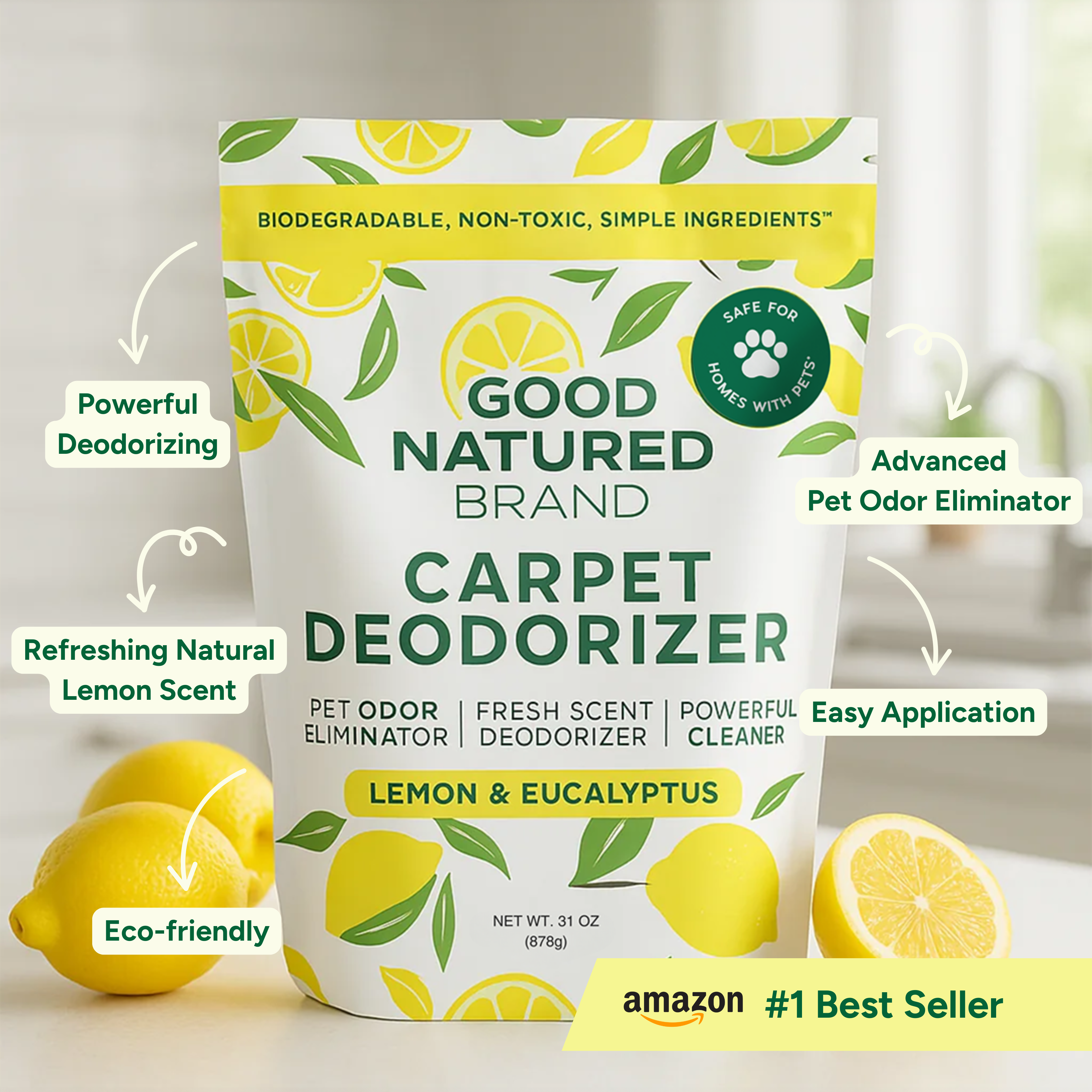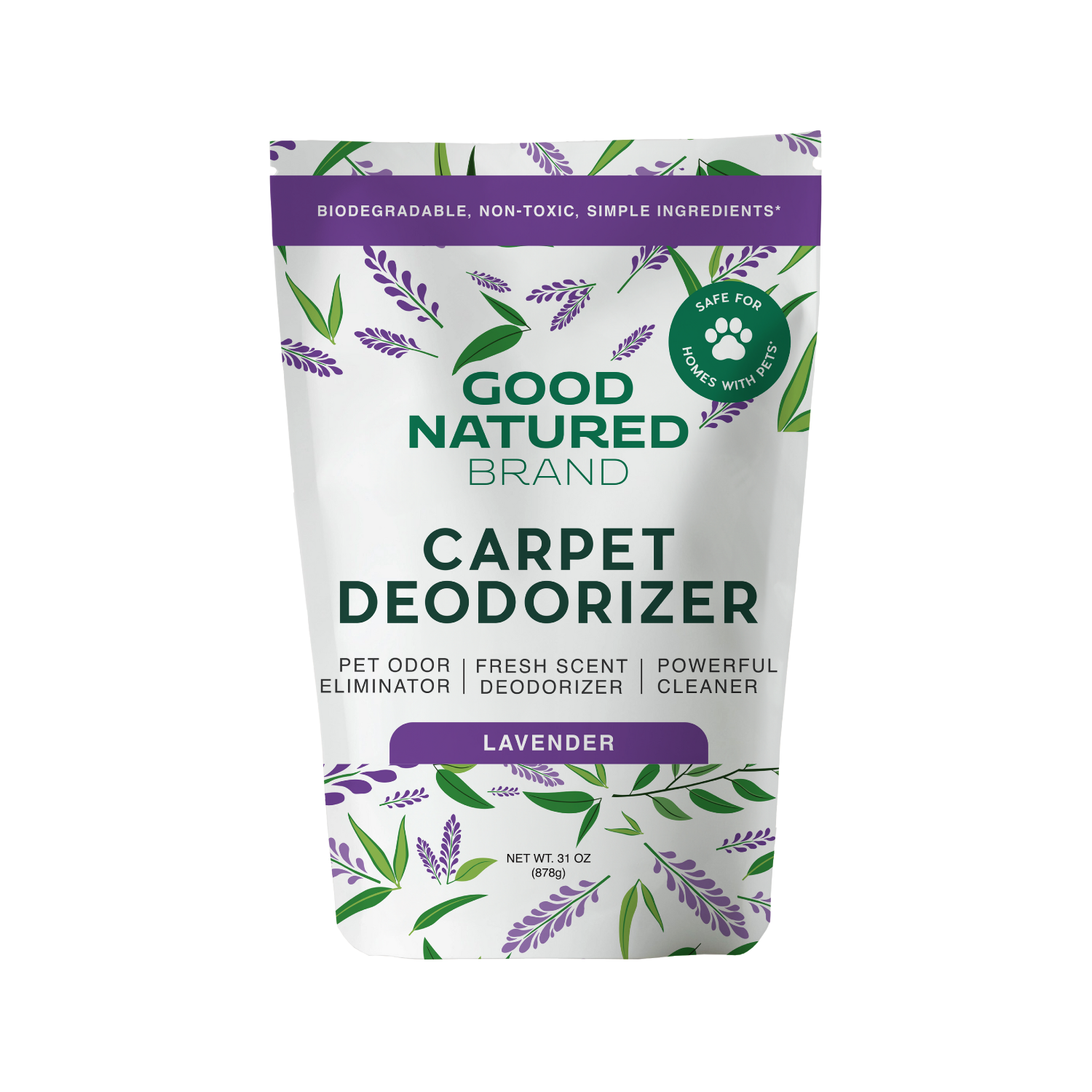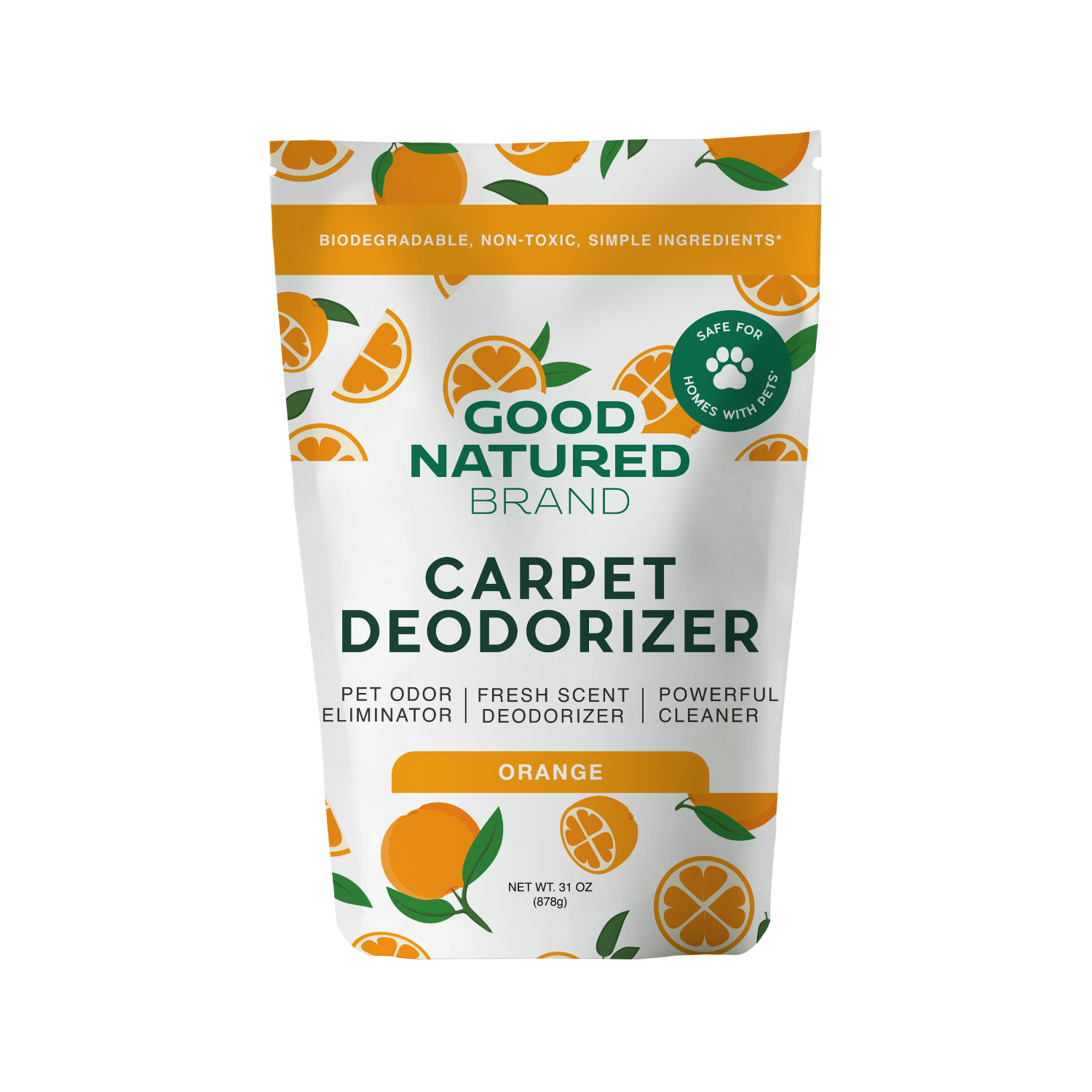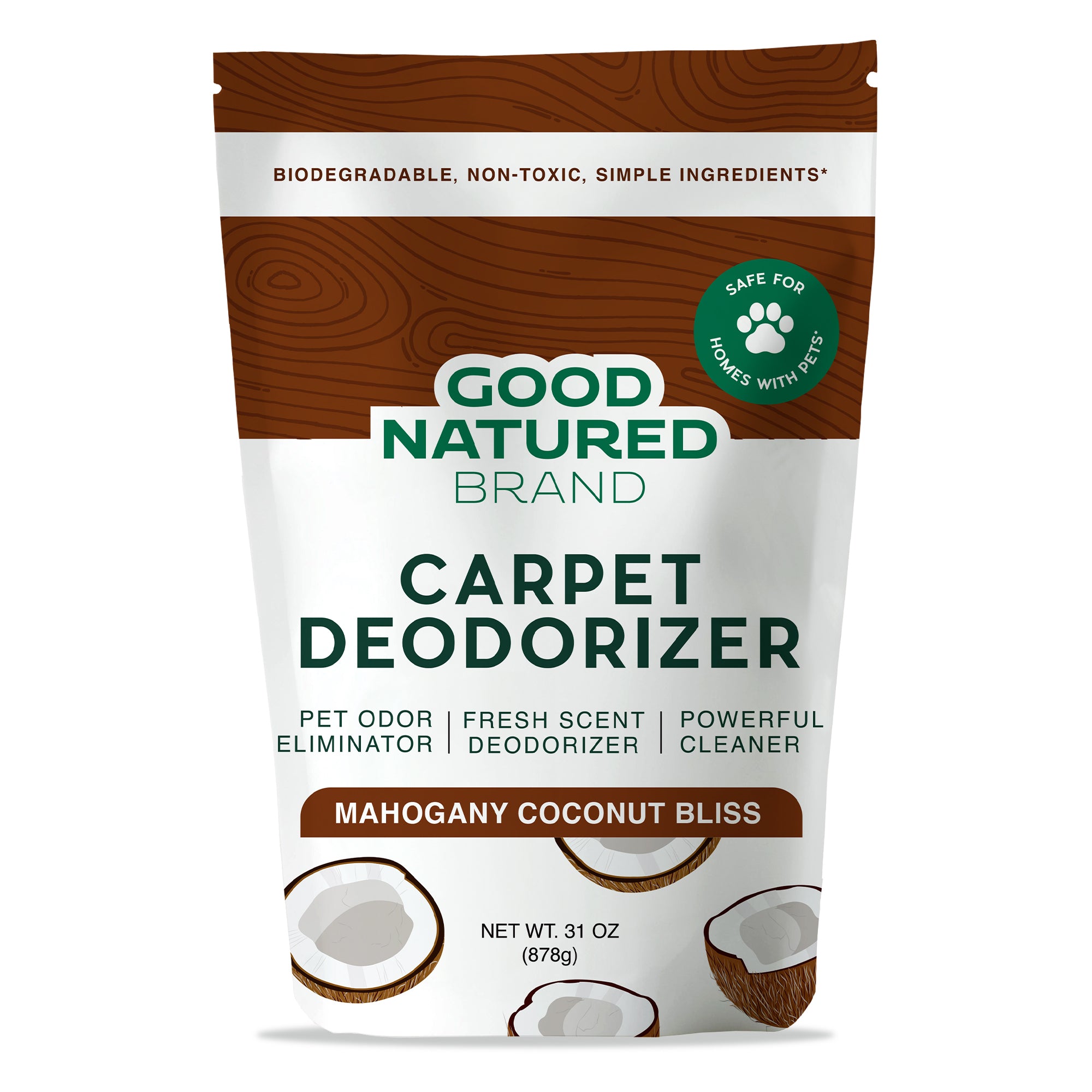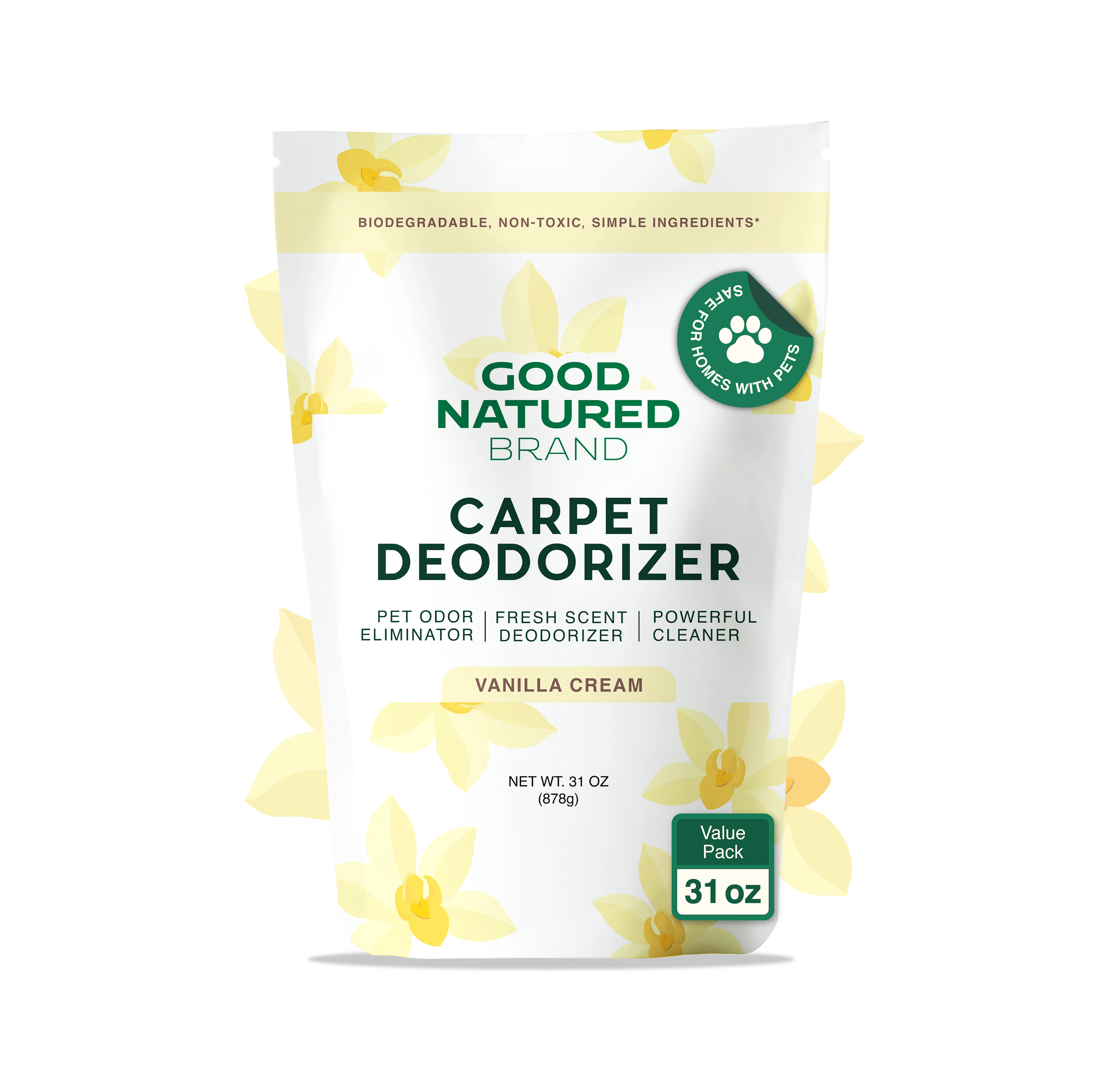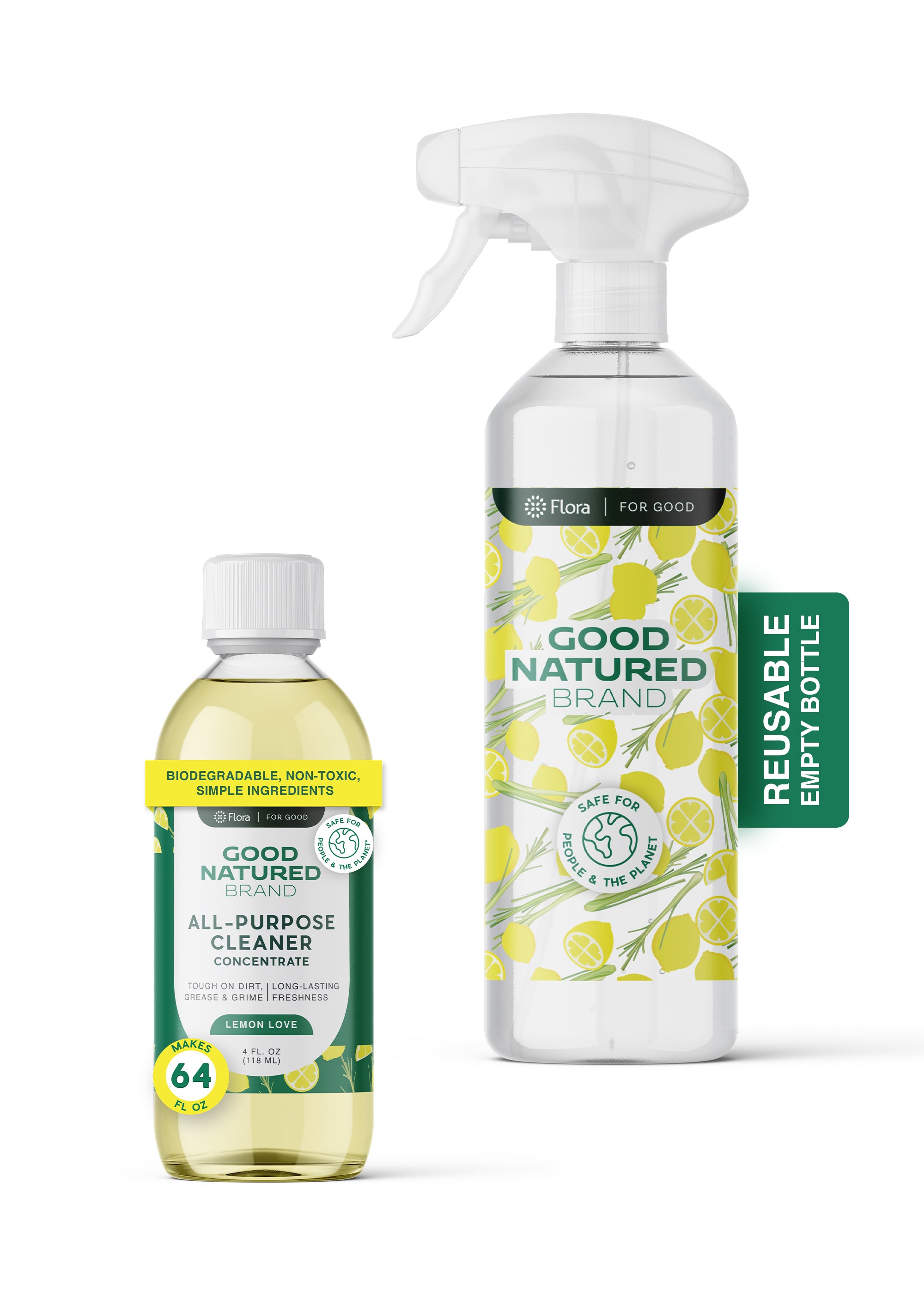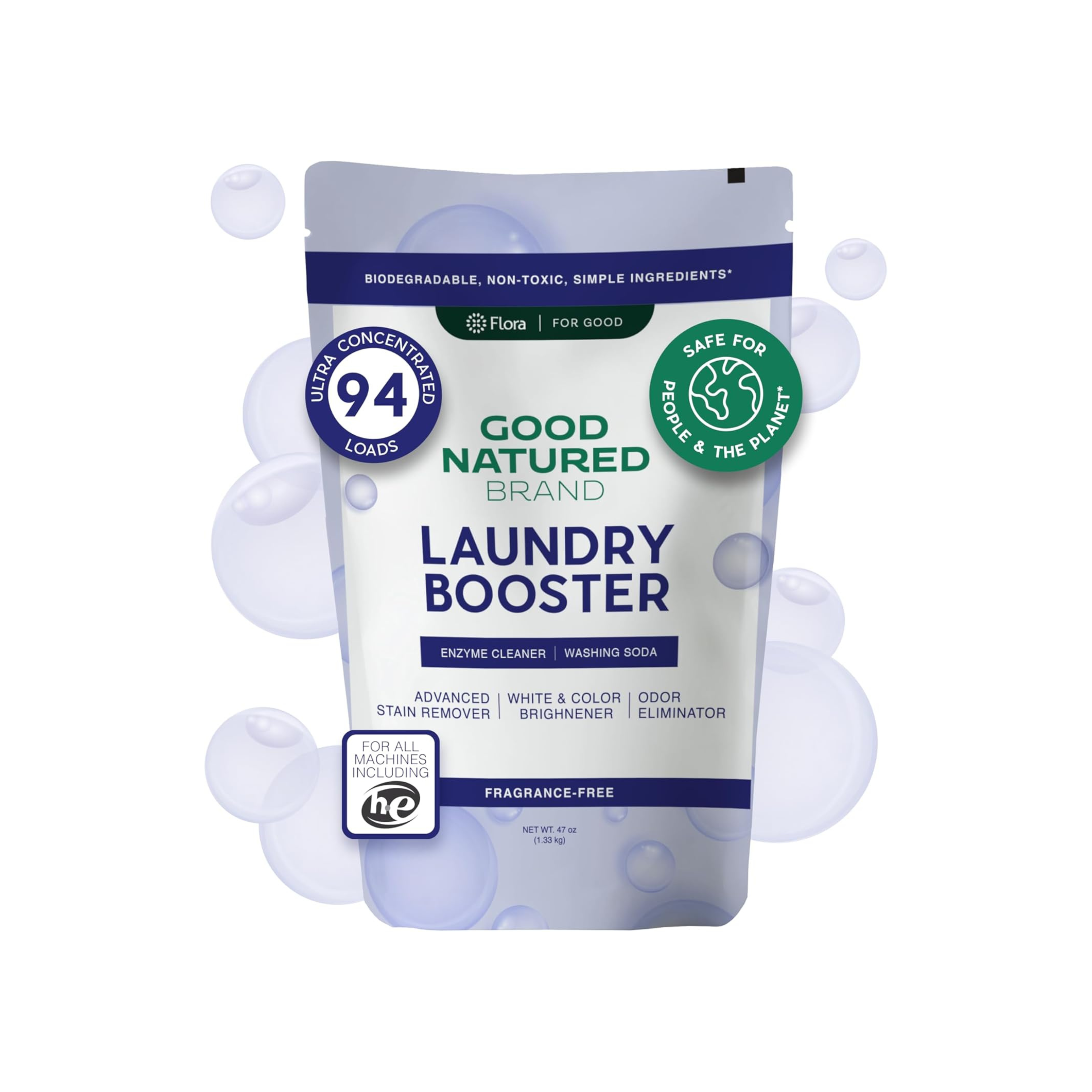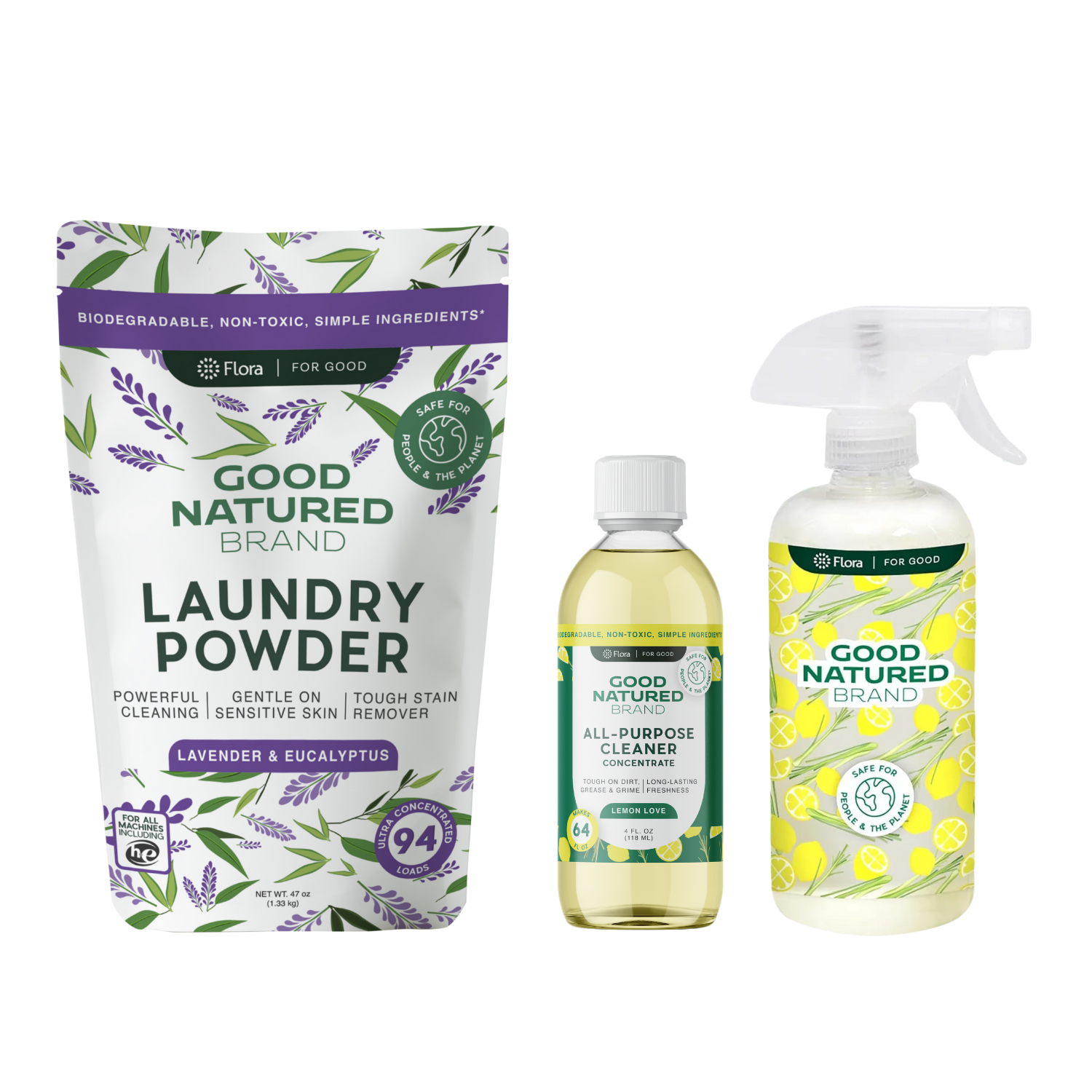Understanding Why Cat Pee Smell Is So Hard to Remove
If you’ve ever struggled to remove cat urine odor, you already know how frustrating it can be. Cat pee smell is uniquely strong, persistent, and capable of lingering for months if not handled correctly. Unlike many other household odors, cat urine contains a complex chemical structure made up of urea, uric acid crystals, hormones, and ammonia. Once cat pee dries, the uric acid forms microscopic crystals that attach firmly to carpets, floors, upholstery, and fabrics. These crystals can reactivate whenever humidity increases, causing the smell to return long after you thought the stain was gone.
Many standard cleaners simply mask odors without breaking down the uric acid. This means the smell always comes back—especially if heat, like steam cleaning, is used. Understanding why this smell lingers is the first step toward permanently removing it.
As you work toward a cleaner, fresher home, it’s equally important to use pet-safe products. Eco-conscious pet owners can find a range of natural cleaning solutions at Good Natured Brand: https://www.goodnaturedbrand.com/.
Why Cats Pee Outside the Litter Box
Before learning how to get rid of cat pee smell, it’s important to understand why the accident happened in the first place. Cats are naturally clean animals, and when they urinate outside the litter box, it’s usually a signal that something needs attention.
Stress and Anxiety
Changes in your home—new pets, visitors, a move, or even loud noises—can lead to stress-related accidents. Cats often pee on soft surfaces like beds or carpets when they feel insecure because those areas hold your scent.
Medical Issues
Urinary tract infections, bladder inflammation, kidney disease, and diabetes can all cause inappropriate urination. If your cat suddenly starts peeing outside the litter box, a vet visit is essential.
Dirty Litter Boxes
Cats rely heavily on scent and cleanliness. If the litter box hasn’t been cleaned regularly, they may choose other places to relieve themselves.
Territorial Marking
Unneutered or stressed cats may spray to mark territory. These odors are even more concentrated and require stronger cleaning methods.
Understanding the “why” behind the behavior helps prevent future accidents—and proper odor removal ensures your cat won’t return to the same spot.
How to Identify Cat Pee Smell When You Can’t See It
Cat urine can be hard to spot, especially on dark carpets or hidden corners. Before you treat the area, you need to locate the exact source of the odor.
Using a UV Blacklight
A UV light is one of the easiest ways to find dried cat urine. Under blacklight, urine stains glow a yellowish-green color.
Following the Smell
Start in areas your cat prefers—bedrooms, laundry piles, closet corners, under furniture, or around litter box zones. Cats often choose quiet, absorbent areas.
Checking Common Hidden Spots
-
Behind sofas
-
Under beds
-
On rugs layered over carpet
-
Closets
-
Laundry baskets
-
Near doors or windows
Finding every stain is crucial—if even a small amount remains, your cat will smell it and may continue to return to the spot.
Immediate Steps for How to Get Rid of Cat Pee Smell When the Accident Is Fresh
Fresh cat pee is much easier to remove than dried urine, so act as soon as you discover the accident.
Blot the Area (Don’t Rub)
Use paper towels or a clean cloth to blot as much urine as possible. Press firmly to absorb moisture but avoid scrubbing, which can push urine deeper into fibers.
Apply Cold Water
Rinse the area with a small amount of cold water and blot again. Hot water should be avoided because it can set the stain.
Avoid Using Steam Cleaners
Heat causes uric acid crystals to bind more tightly to surfaces, making odors stronger and harder to remove.
Once you’ve blotted the area, you’re ready to move to more targeted removal methods.
How to Get Rid of Cat Pee Smell in Carpets
Carpets are among the most challenging surfaces to clean because urine sinks deep into the padding.
Step-by-Step Carpet Odor Removal
-
Blot the fresh urine thoroughly.
-
Saturate the area with an enzyme-based cleaner designed for pet stains.
-
Allow the cleaner to sit for several hours or, ideally, overnight.
-
Blot again and allow the carpet to air dry.
-
Once dry, sprinkle a thin, even layer of Carpet Deodorizers (https://www.goodnaturedbrand.com/collections/carpet-deodorizers) to neutralize any remaining scent molecules and refresh the fibers.
Carpet powders are especially helpful for deeper layers where odors may linger.
Preventing Repeat Accidents on Carpets
Cats return to areas that still contain trace odors. Thorough odor neutralization is essential to preventing ongoing marking behaviors.
How to Get Rid of Cat Pee Smell on Fabrics, Bedding, and Clothing
Fabrics absorb odors quickly and require proper pretreatment.
Pre-Soaking Fabrics
Soak the item in cold water mixed with an enzyme cleaner. Avoid hot water because it can lock in the smell.
Using Laundry Powders for Odor Removal
When washing bedding, blankets, towels, or clothing affected by cat pee, use a natural, odor-targeting detergent like Laundry Powders (https://www.goodnaturedbrand.com/collections/laundry-powders). These powders help break down odor molecules without harsh chemicals that could irritate your cat’s skin.
Wash on a cold cycle first. If the smell remains, repeat before using any heat-drying method.
Treating Non-Washable Fabrics
Upholstery, decorative pillows, or cushions can be treated with enzyme sprays and thoroughly air-dried. Avoid saturating inner foam padding unless necessary.
How to Get Rid of Cat Pee Smell on Hard Floors
Wood, tile, laminate, and vinyl all require different cleaning approaches.
Hardwood Floors
Cat urine can seep through cracks and cause long-term staining and odor problems. Clean the surface immediately and avoid excess moisture. Apply enzymatic cleaner and let it air dry naturally.
Tile, Laminate, and Vinyl
These surfaces are easier to clean but still require proper odor neutralization. After blotting and applying an enzyme cleaner, wipe down the area with a safe, powerful solution like All-Purpose Cleaners (https://www.goodnaturedbrand.com/collections/all-purpose-cleaners). This ensures no lingering residue or odor remains.
Avoid Vinegar on Certain Surfaces
While vinegar is a popular cleaning ingredient, it can damage some finishes and flooring types. Always test in a hidden spot first.
How to Get Rid of Cat Pee Smell in Furniture and Mattresses
When urine seeps into cushions or mattresses, cleaning becomes more complex—but still very doable.
Upholstered Furniture
-
Blot any damp areas.
-
Use a targeted enzyme cleaner designed for fabrics.
-
Let the area soak for several hours.
-
Blot excess moisture and allow it to dry completely.
-
If needed, reapply to break down deeper odor layers.
Mattresses
Remove bedding immediately and treat the mattress with a generous amount of enzymatic cleaner. Since mattresses are thick, the cleaner needs time to penetrate urine deposits. Keep the room well-ventilated and allow the mattress to dry fully before reassembling.
Treating Cushion Inserts
If removable, treat foam inserts separately from covers. Air-drying in sunlight can help neutralize lingering odors naturally.
Natural Remedies for Cat Pee Smell and When to Use Them
Some DIY methods can help in early stages or mild situations—but they do not replace enzyme cleaners.
Vinegar and Baking Soda
Vinegar helps neutralize ammonia but does not dissolve uric acid crystals on its own. Baking soda assists in deodorizing after cleaning.
Hydrogen Peroxide Solutions
Useful for disinfecting and lightening stains—but must be tested on fabrics or wood to avoid damage.
Salt, Lemon, and Other Home Remedies
Some can help deodorize but are not reliable for deep, old, or concentrated cat urine odors.
When Natural Remedies Are Not Enough
If the cat pee smell is old, deep, or on delicate materials, enzyme-based cleaners or professional cleaning may be necessary.
Advanced Techniques for Eliminating Stubborn Cat Pee Smell
Some cat pee odors are so deeply embedded that basic cleaning isn’t enough. Understanding advanced methods can help restore your home more effectively.
Using Enzyme Cleaners the Right Way
Enzyme cleaners work by breaking down the uric acid crystals responsible for lingering odor. However, they must be used correctly to work:
-
Saturate the entire affected area—not just the surface
-
Allow the cleaner to soak for several hours
-
Avoid walking on or covering the treated space
-
Repeat applications for older or severe odors
Patience is key. Enzymes need time to break down all odor-causing compounds.
Why Steam Cleaning Makes Cat Pee Smell Worse
Steam or hot water cleaners may set urine into fibers permanently. High heat bonds uric acid crystals deeper into carpets, mattresses, and upholstery, making the smell nearly impossible to remove later. Avoid heat-based cleaning methods until the stain has been fully neutralized.
Professional Cleaning Options
If you’ve tried everything and odors persist, professional services like carpet extraction or upholstery cleaning can remove deeper layers of contamination. These services use specialized tools to lift urine from padding, foam, and subflooring.
How to Get Rid of Cat Pee Smell in Multi-Cat Households
Homes with multiple cats can face more frequent territorial marking and odor challenges. Eliminating the smell completely is essential to preventing ongoing issues.
Addressing Territorial Marking
Cats often pee to claim space, especially when they feel threatened or stressed. Removing the scent fully helps reset the environment.
Providing Sufficient Litter Boxes
The rule of thumb is one litter box per cat, plus one extra. Boxes should be distributed throughout the home to avoid resource competition.
Reducing Stress
Calming pheromones, routine schedules, and enriched environments (scratching posts, perches, toys) can dramatically reduce unexplained urination.
How to Prevent Cat Pee Smell From Coming Back
Odor removal is only part of the solution—preventing the smell from returning is equally important.
Maintaining Clean Litter Boxes
Cats avoid dirty boxes. Scoop once or twice daily and fully wash the litter box weekly. Avoid strong chemical cleaners that leave behind residue cats may dislike.
Choosing the Right Litter Box Setup
Closed boxes, open boxes, high-sided boxes, and multiple location options all affect cat comfort. Observe your cat’s preferences and adjust accordingly.
Eliminating All Odor Traces
Cats rely heavily on scent. Even if humans cannot smell the urine, cats can—and they may urinate again if the scent remains.
To ensure complete removal, freshen carpets and rugs with Carpet Deodorizers (https://www.goodnaturedbrand.com/collections/carpet-deodorizers), wash bedding and blankets using Laundry Powders (https://www.goodnaturedbrand.com/collections/laundry-powders), and wipe feeding areas with All-Purpose Cleaners (https://www.goodnaturedbrand.com/collections/all-purpose-cleaners) to remove lingering odors that can trigger repeated accidents.
Medical Reasons Behind Cat Pee Smell
Inappropriate urination is often the first sign of a medical issue. If odor problems persist despite cleaning, a veterinary evaluation is essential.
Common Medical Causes
-
Urinary tract infections
-
Bladder stones
-
Kidney disease
-
Diabetes
-
Hyperthyroidism
-
Age-related cognitive changes
Warning Signs to Watch For
-
Blood in urine
-
Excessive thirst
-
Frequent bathroom trips
-
Straining to urinate
-
Crying during urination
-
Increased accidents in senior cats
Early diagnosis can prevent long-term health complications.
How to Remove Cat Pee Smell From Carriers, Crates, and Travel Gear
Travel accessories absorb odors easily, and cats may refuse to enter them if they smell like urine.
Hard Shell Carriers
Clean with cold water and an enzyme cleaner. Afterward, wipe down surfaces using pet-safe All-Purpose Cleaners to remove any lingering residue.
Soft Carriers and Crate Pads
Most soft carriers can be partially or fully machine washed. Pre-treat fabric with an enzyme cleaner, then wash with Laundry Powders to fully remove odors before air drying.
Travel Bedding and Blankets
Always rewash travel blankets using Laundry Powders to ensure odors do not follow your cat to future trips.
Eco-Friendly Ways to Get Rid of Cat Pee Smell
Many commercial cleaners contain chemicals that can be harmful to pets. An eco-friendly approach protects both your cat and your environment.
Why Eco-Friendly Cleaners Are Better for Cats
Cats are sensitive to artificial fragrances, ammonia, bleach, and harsh detergents. Natural cleaning products reduce respiratory irritation, skin reactions, and long-term health risks.
Good Natured Brand’s Role in Safer Home Cleaning
Good Natured Brand offers safe and effective odor-removal products that help keep cat homes fresh without exposing pets to toxins.
For pet care and cleaning tips, you can explore articles on the Good Natured Brand blog:
https://www.goodnaturedbrand.com/pages/blog.
Avoiding Toxic Odor-Covering Sprays
Air fresheners only mask odors temporarily. Real odor removal requires breaking down the chemical compounds in cat urine—not covering them with artificial scents.
How Odor Removal Improves Cat Behavior
The link between odor and behavior is stronger than many cat owners realize. Cats rely heavily on scent for communication, safety, and territory.
Why Cats Keep Peeing in the Same Spot
If a cat smells even faint traces of urine, they may think the area is an “approved” bathroom. Eliminating all odors prevents this cycle.
How Proper Cleaning Reduces Stress
Cats thrive in clean, well-managed environments. Removing strong smells helps reduce anxiety and encourages positive litter box habits.
Using Odor Neutralization as a Behavior Training Tool
Whenever you retrain a cat to use the litter box, odor control plays a central role. If a cat does not smell urine in inappropriate areas, they are far more likely to return to the litter box consistently.
Deep Cleaning Your Home After Cat Pee Smell
If your cat has been urinating outside the litter box for weeks or months, a deeper cleaning strategy may be necessary.
Carpets, Curtains, Rugs, and Upholstery
These materials trap odor. Consider a multi-step approach involving enzyme cleaners, sun exposure, and Carpet Deodorizers to restore freshness.
Bedrooms and Living Spaces
Beds, sofas, and blankets hold scent longer. Use Laundry Powders to wash all washable materials. Follow up with All-Purpose Cleaners on hard surfaces around the area.
Litter Box Zones
Even small splashes or accidental drips around the litter box can contribute to persistent odors. Clean surrounding floors and walls regularly using All-Purpose Cleaners for a fully sanitized environment.
When to Replace Items That Cannot Be Restored
While many cat urine smells can be eliminated, some situations require replacement.
Carpet Padding
If urine has soaked through to the padding beneath your carpet, replacing the padding may be the most effective solution.
Mattresses
Deep saturation can sometimes make mattresses unsalvageable, especially if the odor persists after multiple enzyme treatments.
Upholstery and Cushions
Heavily contaminated furniture may need professional cleaning or replacement.
When Cleaning Becomes Inefficient
If you’ve used proper techniques and still notice odor, it may be time to replace heavily affected items to protect your home’s air quality and prevent recurring accidents.
Conclusion: Mastering How to Get Rid of Cat Pee Smell Permanently
Removing cat pee smell doesn’t have to be overwhelming. The key is understanding how cat urine behaves, using the right cleaning techniques, and preventing future accidents through proper odor neutralization and behavioral care.
High-quality cleaning tools—like Carpet Deodorizers, Laundry Powders, and All-Purpose Cleaners—play an essential role in restoring freshness to your home. These products help remove even deep-set odors safely, naturally, and effectively.
To explore more pet-safe cleaning solutions, visit the Good Natured Brand main page: https://www.goodnaturedbrand.com/
And for more helpful guides on pet care, cleaning tips, and eco-friendly living, check out the Good Natured Brand blog: https://www.goodnaturedbrand.com/pages/blog.
